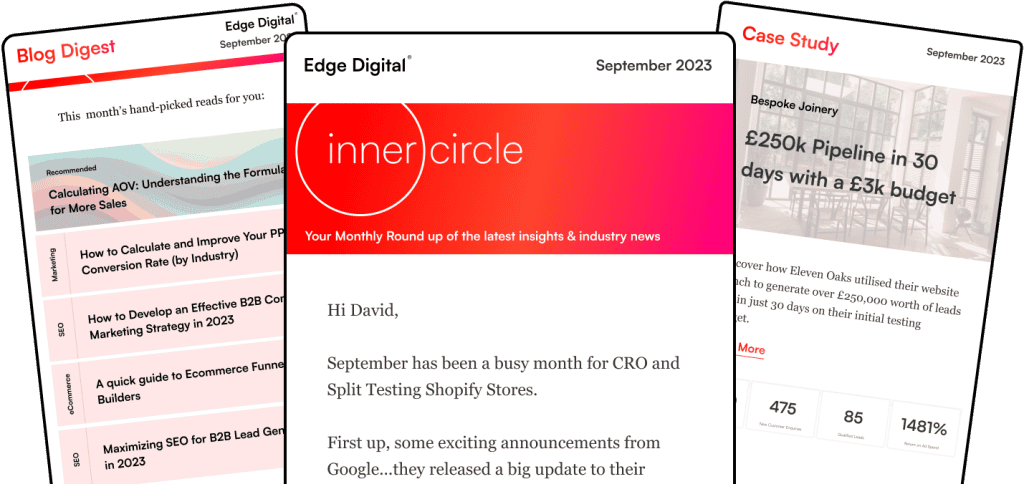Most advertisers stick to the same popular platforms and miss out on valuable opportunities with smaller networks. Underutilised ad networks offer less competition, lower advertising costs, and access to niche audiences that mainstream platforms often overlook.
These lesser-known advertising platforms can be a game-changer for businesses willing to look beyond the usual suspects.

We’ve seen brands get great results by diversifying their ad strategies beyond Google Ads and Facebook. Smaller networks usually have more engaged users, better customer service, and pricing that rewards early adopters.
The main challenge is figuring out which networks fit your audience and goals.
Knowing how to spot and use these underutilised advertising networks means understanding what to look for and how to measure success. The options range from new social platforms to industry-specific networks that could really shake up your marketing results.
Key Takeaways
- Smaller ad networks usually mean lower costs and less competition.
- Niche networks connect you with highly engaged, specific audiences.
- New tech is making these alternative networks easier and more effective to use.
What Are Underutilised Ad Networks?

Underutilised ad networks are digital ad channels that get little attention or investment, even though they can perform really well. These platforms often struggle with visibility or face hesitation from advertisers who stick with what they know.
Definition and Types
Ad networks connect advertisers with publishers by pulling together available ad space. Underutilised networks fall into categories that don’t get much investment compared to their potential.
Gaming Networks are a big example. More than half of US adults are gamers, but gaming gets less than 5% of total ad spend. Mobile gaming is especially overlooked, with users spending 10.6% of their mobile time on games but only 3.9% of mobile ad spend going there.
Digital Out-of-Home (DOOH) Networks also don’t get much love. Programmatic DOOH ad spend will hit just $660 million this year—a tiny slice of overall ad budgets.
Sports Networks, especially women’s sports, are seriously underfunded. Big ad dollars go to major leagues, while niche sports and women’s events barely get noticed.
Why Some Ad Networks Are Overlooked
A few things keep these networks under the radar. Advertisers tend to stick with what’s familiar instead of trying new options.
Audience Misconceptions are a big factor. Gaming networks get ignored because gamers are seen as young, mostly 18-24 and 12-17. Advertisers worry these users don’t have money to spend, forgetting they’ll have buying power soon.
Technical Complexity scares some folks off. Gaming ads need specific targeting for different games and platforms, and DOOH requires understanding location-based targeting and real-time tweaks.
Measurement Challenges can be tricky. Sports ads are great for brand awareness, but it’s hard to track ROI since people aren’t usually shopping during games.
Market Education is lacking. Many advertisers just don’t know what these networks offer or how to use them.
Role in the Digital Advertising Ecosystem
Underutilised ad networks fill gaps that mainstream platforms miss. They help reach audiences and contexts you can’t get elsewhere.
These networks are great for Audience Diversification. Gaming networks reach digital natives who spend loads of time in virtual spaces. DOOH networks catch people while they’re out and about, like during commutes or shopping trips.
Innovation Leadership often starts here. DOOH has made big tech and creative leaps with things like interactive displays and live content updates.
They’re also usually more Cost Efficient. Less competition means cheaper impressions and better ad spots. You can often get premium placements for less than you’d pay on the big platforms.
Future-Proofing is another plus. As social media and TV get less effective, these networks help you stay ahead of the curve.
Advantages of Exploring Underutilised Ad Networks

Smaller ad networks come with three big benefits: access to niche audiences, better ROI through lower costs, and less competition.
Access to Niche Audiences
These networks shine when it comes to reaching specific groups that big platforms often ignore. They’re usually focused on certain industries, interests, or demographics—perfect if you have a specialised product or service.
Industry-Specific Networks help you reach pros in fields like healthcare, education, or finance. These users are already engaged with content that matters to them, so they’re more likely to respond to your ads.
Interest-Based Targeting is easier here. You can find networks for hobbies, lifestyles, or product categories where your ideal customers hang out.
The quality of these niche audiences is usually higher. They’re actively looking for content tied to their interests, so you’ll see better engagement and conversion rates.
Lead generation gets a boost, too. When your message lines up with what the audience cares about, you get more quality leads.
Improved ROI and Cost Efficiency
Ad spend goes further on smaller networks since you’re not fighting with huge brands for the same space. Cost-per-click rates can be 40-70% lower than on the big platforms.
This means you can test more creative ideas and targeting options without blowing your budget.
Budget allocation gets smarter when you spread it across different small networks. You can reduce risk and still reach your audience consistently.
Better ROI comes from lower costs and more relevant ads. When your ads appear in the right places, conversion rates go up and acquisition costs go down.
Performance tracking is often simpler on smaller networks. You get clear insights into audience behaviour without drowning in data.
Reduced Competition and Ad Fatigue
Big platforms are crowded, and everyone’s fighting for attention. On underutilised networks, your ads have more room to stand out.
Ad fatigue is less of a problem since users aren’t bombarded by ads all the time. Every impression counts more.
Brand awareness builds faster in these quieter spaces. Your message doesn’t have to compete with a bunch of similar ads.
Creative flexibility is a bonus. Smaller networks often let you try different ad formats or approaches you couldn’t use on bigger platforms.
The advantages for advertisers using ad networks really show up when competition drops. You can be bolder with your creative and messaging without worrying about immediate copycats.
Key Categories of Underutilised Ad Networks
Three main categories stand out for advertisers looking for less crowded channels: Connected TV (CTV), Digital Out-of-Home (DOOH), and Mobile Gaming Networks. Each one offers unique ways to reach and engage audiences.
Connected TV (CTV)
Connected TV is one of the fastest-growing digital ad opportunities. CTV advertising reaches people through streaming services like Netflix, Amazon Prime, and Disney+.
CTV lets you target viewers based on things like demographics, what they watch, and even household income.
Streaming platforms show ads during premium content, which usually gets more attention than a regular banner or social ad.
There’s still less competition on CTV than on Facebook or Google, so costs are often lower.
Key CTV advantages:
- Premium inventory with high ad completion rates
- Advanced targeting beyond just age or gender
- Brand safety since ads run with professional content
- Cross-device tracking to measure your campaign
CTV is especially good if you’re aiming for affluent audiences who’ve ditched cable.
Digital Out-of-Home (DOOH)
Digital Out-of-Home networks put your ads in real-world places—shopping centres, transport hubs, office buildings, and roadside billboards.
DOOH lets you tweak campaigns in real time based on weather, traffic, or local events. You can swap out creative instantly, no printing needed.
Location targeting is super relevant. You reach people at the perfect moment, like near shops or during commutes.
Popular DOOH placements:
- Shopping centre screens for retail shoppers
- Transport ads for commuters
- Petrol station displays for captive audiences
- Office lobbies for B2B targeting
Measurement has come a long way—many DOOH networks now offer analytics, dwell time, and attribution tracking.
Mobile Gaming Networks
Mobile gaming networks put your ads in front of people while they’re playing games. Players spend a lot of time in these apps, so you get lots of chances to connect.
Mobile gaming ads include banners, interstitial videos, and rewarded content (where players choose to watch for in-game perks). Since players opt in, engagement is usually high.
The audience is broader than you might think. Mobile games are popular with all ages, especially 25-45 year olds who can be tough to reach elsewhere.
Gaming network formats:
- Rewarded video ads that users choose to watch
- Playable ads that let people try your product
- Native integrations built into the game
- Sponsored content and branded elements
Revenue sharing models can be more cost-effective than pay-per-click. You often pay for actions, not just views.
Gaming networks also give you detailed analytics, like session length, user retention, and in-app purchases.
Emerging and Niche Social Ad Networks
Specialised social platforms are packed with engaged users and less competition. They offer advanced targeting and ad formats you won’t find on the main platforms.
Instagram Advertising Opportunities
Instagram is still one of the most underutilised platforms for reaching certain groups. Its visual-first style helps you create content that really connects with niche audiences.
Stories and Reels drive the most engagement, making them perfect for product demos or behind-the-scenes looks.
Shopping ads tie right into Instagram’s shopping features, letting you tag products and make buying easy.
The platform’s audience insights are super detailed, showing interests, behaviours, and buying habits.
Influencer partnerships through Creator Studio offer authentic endorsements. Micro-influencers often have big sway in their communities.
Custom audiences let you target users based on site visits, app activity, or customer lists. Lookalike audiences help you reach similar new users automatically.
Advertising on Reddit
Reddit’s community-driven structure opens up chances for real brand engagement. Each subreddit is its own world with unique interests and vibes.
Promoted posts can blend in nicely with regular content if they’re crafted well. It’s key to match the tone of each community so ads don’t feel out of place.
Banner advertisements show up at the top of subreddits or in user feeds. They’re most effective when aimed at specific communities instead of just everyone.
Reddit’s comment culture means brands need to genuinely participate. Sharing real insights helps build trust over time.
Targeting options let you focus on certain subreddits, interests, or even user behaviors. This way, you can reach people chatting about your topic in real-time.
Reddit’s AMA (Ask Me Anything) format is a direct line to engaged users. When done right, it sparks real conversations and boosts brand awareness.
The upvoting system rewards content people like. Ads that actually help or entertain can get a natural boost from the community.
Platforms for Niche Targeting
Niche social platforms let you reach super-specific audiences that big networks might miss. Discord, for example, brings together gaming and hobby fans in dedicated servers.
Discord partnerships with server owners offer sponsored content opportunities. You can connect with communities focused on particular games, tech, or interests.
BeReal is all about sharing real, unfiltered moments. Its time-sensitive posts encourage genuine engagement.
Alternative social networks show varied interest depending on the region. Threads, for instance, is big in Japan’s alternative network scene.
Professional networks like AngelList zero in on startup communities. LinkedIn alternatives such as Xing are popular in certain countries.
Specialised advertising networks exist for areas like gaming, finance, and tech. These platforms really get their audience’s habits.
Contextual targeting works especially well on niche platforms because the content is so focused. This means ads can be super relevant to what users care about.
Ad Network vs. Ad Exchange: Modern Choices
Ad networks act as middlemen, gathering ad space from publishers, while ad exchanges are open marketplaces for real-time bidding. The level of transparency and inventory quality can be pretty different between the two.
Operational Differences
Ad networks collect ad space from publishers and sell it to advertisers in bulk. They handle deals and set prices through direct relationships.
Ad exchanges are tech platforms, not traditional companies. Advertisers and publishers trade inventory directly and automatically.
Key operational distinctions:
- Pricing structure: Ad networks use fixed rates, while exchanges use dynamic, real-time bidding.
- Transaction speed: Networks are more manual, but exchanges are instant and automated.
- Inventory management: Networks curate and package inventory, exchanges offer raw access.
Ad exchanges work with DSPs and SSPs, making things more complex. Networks keep it simpler between advertisers and publishers.
Transparency and Control
Ad networks usually don’t show exactly where your ads will appear or who will see them. Advertisers and publishers often don’t know who they’re working with.
Ad exchanges are way more transparent. Both sides can see details like placement and audience info.
Transparency comparison:
| Aspect | Ad Networks | Ad Exchanges |
|---|---|---|
| Ad placement visibility | Limited | Complete |
| Buyer/seller identity | Hidden | Visible |
| Pricing information | Fixed rates | Real-time data |
| Campaign optimisation | Delayed changes | Instant adjustments |
Real-time bidding in exchanges means you can tweak campaigns right away. Networks take longer because they’re more hands-on.
Inventory Quality Considerations
Ad networks usually offer premium inventory because they have direct ties with established publishers. This means better placements and brand safety.
Networks pick inventory based on quality and audience. Publishers often get higher prices since networks position their inventory as premium.
Ad exchanges often handle what’s left after premium spots are sold. It’s not always lower quality, just a different tier.
Quality factors:
- Brand safety: Networks offer more controls through manual selection.
- Audience verification: Exchanges give detailed audience data.
- Inventory freshness: Exchanges provide real-time access to new inventory.
Bidding on exchanges lets you target more precisely, but you need to know what you’re doing to avoid bad placements. Networks make quality control easier but with less detailed targeting.
Technological Innovations Transforming Underutilised Ad Networks
Smaller ad networks are stepping up thanks to new tech. AI, programmatic automation, and privacy-focused strategies help them compete with the big guys.
AI and Machine Learning Integration
AI is changing how underused ad networks understand users and fine-tune campaigns. Machine learning digs through tons of data to spot trends humans might miss.
AI-driven ad optimisations and contextual targeting let smaller networks keep up. These systems learn from each campaign and get smarter over time.
ML models can predict which users will click or convert. This helps networks use their inventory more efficiently and boost results for advertisers.
Key AI applications:
- Real-time bid optimisation
- Audience segmentation
- Predicting creative performance
- Fraud detection
AI-powered contextual targeting also means less reliance on third-party cookies. Networks look at page content and user intent to serve relevant ads without sacrificing privacy.
Programmatic Advertising Developments
Programmatic tech is making automated ads accessible for smaller networks. Real-time bidding platforms are now within reach, not just for the big players.
Header bidding lets underutilised networks compete in auctions. Publishers can offer their ad space to multiple buyers at once, driving up demand and revenue.
Advanced programmatic features:
- Cross-device targeting
- Video and connected TV integration
- Dynamic creative optimisation
- Supply path optimisation
White-label programmatic platforms cut down on development costs. Networks can upgrade their tech quickly without building everything from scratch.
Server-to-server integrations help pages load faster while keeping targeting accurate. This keeps publishers happy and user experience smooth.
Privacy and Use of First-Party Data
Privacy rules are changing how ad networks handle user data. Smaller networks can get ahead by building privacy-first strategies from the start.
First-party data and contextual targeting are now must-haves as third-party cookies fade out. Networks help publishers make the most of their audience data with smart analysis tools.
Privacy-compliant strategies:
- Consent management platforms
- Zero-party data collection
- Cookieless tracking
- Better audience modeling
Contextual ad tech analyzes page content in real-time—no personal data needed. This keeps things GDPR-friendly and effective.
Customer data platforms help networks pull together all kinds of first-party data. Publishers can build full audience profiles from emails, site behavior, and purchase history.
Best Practices for Advertisers and Publishers
Winning with smaller ad networks means having a smart plan. It’s about getting the most from your budget, protecting your brand, and trying out creative ad formats.
Maximising Ad Spend and ROI
Keep a close eye on performance metrics when testing smaller networks. With less competition, you can often get better deals on ad placements.
Performance tracking priorities:
- Cost per acquisition (CPA)
- Click-through rates (CTR)
- Conversion rates
- Brand awareness
Publishers should look for networks with transparent revenue sharing. Some offer up to 75% of ad revenue, which is much better than what the big platforms give.
It’s smart to test out a few networks at once with small budgets. This helps you see which ones actually work for your audience.
Budget strategy:
- Start by putting 10-15% of your ad spend into new networks
- Increase spend where you see results
- Watch frequency caps to avoid annoying your audience
Advertisers can often negotiate better rates directly with smaller networks. They tend to offer more personal service and flexible pricing.
Ensuring Brand Safety and Transparency
Brand safety can be trickier with lesser-known networks. It’s important to know where your ads are showing up and make sure the content fits your brand.
Check publisher lists and use content filtering. Smaller networks may not have the fancy brand safety tools of the big guys.
Key steps:
- Ask for detailed site lists
- Use third-party brand safety tools
- Manually check placements
- Set up exclusions for certain content types
Publishers should keep their sites clean and professional. This attracts better advertisers and higher rates.
Stay in touch with your network account managers. Good communication makes it easier to fix any brand safety issues quickly.
Transparency must-haves:
- Real-time reporting
- Clear fee structures
- Publisher guidelines
- Ad placement approvals
Regular audits keep quality high. Both advertisers and publishers benefit from ongoing checks.
Leveraging Diverse Ad Formats
Smaller networks often offer unique ad formats you won’t find on major platforms. These can help you stand out and engage your audience.
Emerging opportunities:
- Native content integration
- Interactive display ads
- Video pre-roll alternatives
- Mobile-specific placements
Publishers should try out different formats to boost revenue. Some work better with certain audiences or content types.
Networks with autotag features can automatically rotate high-performing formats like pop-unders, interstitials, and in-page push notifications.
Video ads usually see higher engagement than static ones, but they can slow down your site if you’re not careful.
Format testing tips:
- A/B test where you place ads
- Track user experience metrics
- Check engagement by device
- Watch for any impact on site speed
It’s all about balancing revenue with a good user experience. Too many aggressive ads might make money short-term but could drive people away in the long run.
Frequently Asked Questions
Marketers are always looking for profitable alternatives outside the mainstream platforms. Knowing how to evaluate options and target niche audiences helps find hidden gems while keeping your brand safe.
What are some lesser-known advertising platforms that could yield a high ROI for marketers?
PropellerAds is known for sticky and interstitial formats with quick approvals. Their weekly payments are great for smaller advertisers testing new ideas.
Media.net offers generous revenue shares and flexible ad formats. It’s a solid alternative to Google’s contextual ads.
Outbrain focuses on native ads on top publisher sites. It’s especially good for brands aiming to build thought leadership.
AdRoll is a go-to for retargeting across multiple channels. Their reporting is transparent, with detailed conversion and ROI metrics.
How can I identify advertising networks with untapped potential for my niche market?
Look for vertical networks focused on single industries. They usually offer better targeting than broad networks.
Find networks that already serve your target audience. Sectors like automotive, finance, and B2B often have their own platforms with less competition.
Check out affiliate networks in your industry. These often use commission-based models, so you only pay for real results.
Keep an eye on new retail media networks from companies like Walmart and Target. They use first-party shopping data for super-targeted ads.
In what ways can smaller ad networks provide competitive advantages over major players like Google and Facebook?
Smaller networks usually offer more personalised customer service. You can actually talk to account managers instead of getting stuck with automated support.
Lower competition means fewer bidding wars. That often lets you grab better ad placements for less money.
Niche networks give you access to really engaged audiences. Their specialised focus can lead to higher conversion rates than the big, broad platforms.
Many smaller networks have flexible policies and faster approvals. You can get your campaigns live quickly without waiting forever for compliance checks.
What strategies should be implemented for effective campaign management on alternative advertising platforms?
Start with a small test budget to see how each platform performs. Putting 10-15% of your total spend into testing is a good rule of thumb.
Set up solid tracking before launching your campaigns. Smaller networks might need custom attribution models to track results properly.
Spread your spend across a few alternative networks instead of just one. This helps lower your risk and boosts your reach.
Keep testing different creative ideas on each network. What works on big platforms might need tweaks for these alternative audiences.
How can advertisers ensure brand safety when exploring new advertising networks?
Always research who owns the network and what their reputation is like. Look up industry news and peer reviews to spot any red flags.
Set up blacklists for sites you don’t want your ads appearing on. Keeping an active list helps protect your brand.
Check out each network’s policies on content moderation and fraud prevention. Understanding how ad networks handle brand safety is key.
If you can, start with whitelisted publishers. This gives you more control over where your ads show up.
What criteria are essential for evaluating the performance and reliability of emerging advertising networks?
Payment reliability is a top priority when checking out new ad networks. Look into their payment schedules and minimum payout thresholds.
Check for any history of payment issues before signing up.
See what kind of targeting options they offer and what audience data is available. The more detailed the demographic and behavioral targeting, the better your results can be.
Make sure the reporting is transparent and the data is accurate. You want clear performance metrics with no hidden fees.
It’s also smart to look at how easy it is to integrate technically. Networks with solid API support make campaign management a lot smoother.



